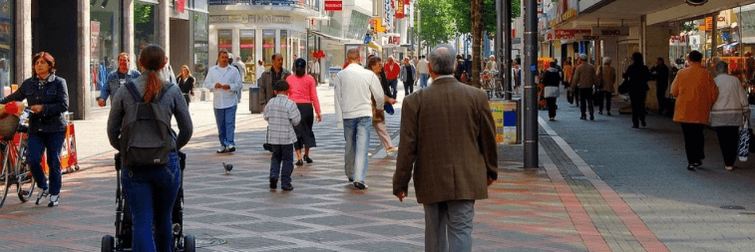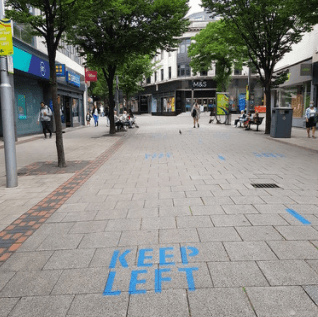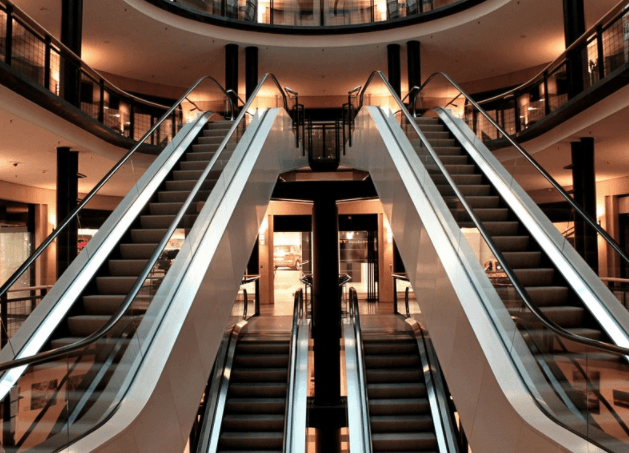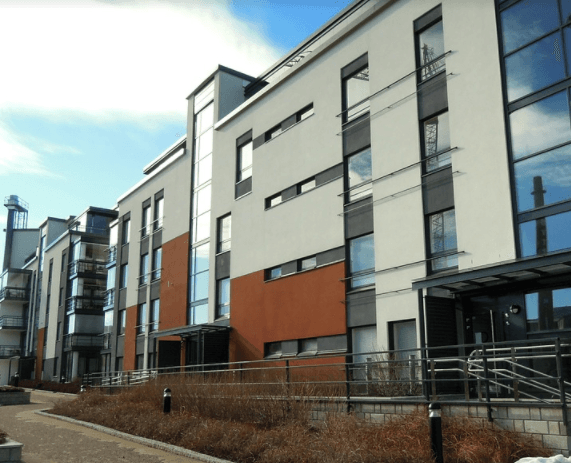
blog: Designing the future our children deserve
Friday 4th December 2020
As we are told to remain socially distanced from others and many hospitality venues stay closed, there can be little doubt that our high streets will be in decline over the next few months, with many people opting to shop online.
The collapse of high-street giants the Arcadia Group and Debenhams this week shows how precarious the situation is. At the same time, the ‘new normal’ for the working week, means that people are no longer commuting into the city every day, which could, in time, create more empty office space. The combined impact of changing shopping habits and working patterns, means that far fewer people will be coming into our town and city centres for those purposes; and as a result, city centres will need to adapt and re-purpose space. What will all this do for public transport?

I suggest that with some rethinking, there are opportunities here for the bus industry. In the last week, two of the biggest UK property companies have each written down its assets by a ten-figure sum. Those same big owners of retail and commercial office space need to find new customers and quickly; organisations that will take up prime space in the hearts of our city centres.
At the same time, the government wants to create new hospitals, colleges, and infrastructure to kickstart the economy, with an updated version of Roosevelt’s New Deal. It is a great opportunity to locate these new services in central locations that are well-connected by a variety of transport services, to help mitigate extra car journeys and encourage greater uptake of sustainable modes.

Since many retailers are moving from shopping centres to alternative smaller premises, shopping centres could be a suitable location for additional services being proposed by the government.
With much of the infrastructure in place already, such as floor space, drainage, and power, it could be ready far faster than a purpose-built facility.
New services such as hospitals would generate more trips into the city, and if they were to utilise shopping centre venues, it’s likely that they’d already be served by road and rail, pedestrian networks and cycle paths. This would help enhance our existing transport network by creating demand for sustainable transport.
Introducing new hospitals and major school developments, in the heart of the city centre will re-energise the smaller retail sector by encouraging employees to commute by public transport, bringing in people to work but also to shop or to eat and drink. In doing so, we create a new normal where commuting by public transport can continue, where car use can be controlled by parking charges, where the continual growth in car mileage is tackled systemically by making the alternatives easier.
Out of town shopping centres could also be considered for alternative purposes if the contraction of retail impacts them too. Their foundations would admirably support blocks of flats and town houses, whilst lower density housing could be created amid the acres of black top tarmac, with the drive through burger joint remodelled as a community shop. Buses could pass through the site from corner to corner, coming in at what is now the public entrance, and going out by what is currently the HGV entrance, and vice versa, to enhance connectivity.

Concerted action is crucial for creating these significant transformations. There needs to be some level of rethinking around land use and zoning, and an understanding of alternative ways of making money from the built environment we have already created.
Clearly there is much we can do to plan for the future and to influence the public and developers about the right locations for key demand generators. Crazy? Of course I am. But to leave everything to wishful thinking, market forces, and the death of towns – that would be crazier still.
